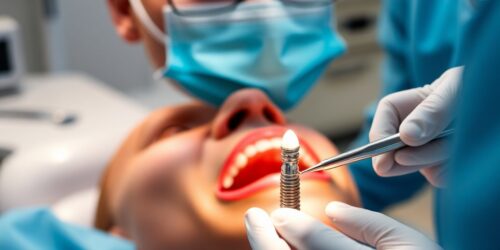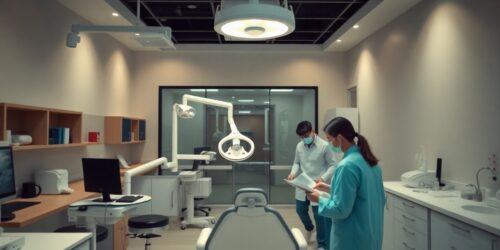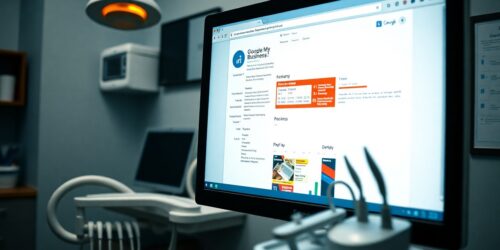Can Virtual Reality Effectively Alleviate Dental Anxiety During Procedures?
There’s a growing interest in how virtual reality (VR) can transform your dental experience, particularly if you often feel anxious during procedures. This innovative technology offers immersive environments that can distract you and help reduce anxiety, making visits to the dentist less stressful. In this post, we’ll explore how VR works, the evidence supporting its effectiveness, and what you can expect when integrating this cutting-edge approach into your dental care. Understanding these insights may empower you to overcome your dental fears and improve your overall oral health experience.
Key Takeaways:
- Virtual Reality (VR) Usage: VR technology has been increasingly adopted in dental settings to distract and calm patients during procedures.
- Reduction in Anxiety Levels: Studies indicate that patients using VR report significantly lower anxiety levels compared to traditional methods.
- Enhanced Patient Experience: The immersive nature of VR can transform a potentially stressful environment into a more enjoyable experience.
- Increased Compliance: Patients who experience reduced anxiety through VR may be more likely to attend appointments and accept necessary treatments.
- Limitations and Considerations: While promising, VR may not be suitable for all patients; individual responses can vary based on personal comfort and technology familiarity.
Understanding Dental Anxiety
For many individuals, dental anxiety is a common and often overwhelming feeling that can prevent them from seeking necessary dental care. This anxiety can stem from past negative experiences, fear of pain, or even the sounds and smells associated with dental procedures. Understanding this phenomenon is the first step toward addressing and managing it effectively.
Definition and Prevalence
Below, dental anxiety is defined as a heightened state of fear or unease related to dental visits. Studies show that approximately 10-15% of adults experience severe dental anxiety, while many more may have milder forms that still influence their willingness to attend dental appointments.
Psychological Impact on Patients
Psychological factors play a significant role in how you experience dental anxiety. This anxiety can lead to avoidance behaviors, impacting not only your dental health but also your overall well-being.
Further, the emotional toll of dental anxiety may result in stress and increased tension, affecting your quality of life. You might find it challenging to relax in dental chairs, leading to heightened discomfort and a negative feedback loop that reinforces your fears. Managing this anxiety effectively is vital for ensuring regular dental visits, ultimately supporting better oral health and reducing the fear associated with dental procedures.
Overview of Virtual Reality
One innovative approach gaining traction in various fields is Virtual Reality (VR). This technology immerses users in a simulated environment, allowing for experiences that can distract from stressful situations. In dentistry, VR shows promise in managing anxiety. For a deeper understanding, you can explore the research on [PDF] Use of Virtual Reality for the Management of Anxiety … here.
What is Virtual Reality?
By definition, Virtual Reality is an interactive computer-generated experience that simulates a real or imagined environment. Utilizing special equipment such as VR headsets, you can engage with a three-dimensional space, providing an escape from your immediate surroundings. This engagement can be particularly beneficial in managing anxiety during dental procedures.
Applications in Healthcare
Beside its entertainment origins, Virtual Reality has made significant strides in the healthcare sector. You may encounter VR as a tool for pain management, rehabilitation, and even exposure therapy, helping patients confront fears in a controlled environment.
A growing body of research highlights the effectiveness of VR in reducing anxiety levels and improving patient experiences. In dentistry, you may find VR environments designed to calm your nerves by transporting you to tranquil settings or immersing you in games that take your mind off the procedure. As this technology continues to expand, you can expect even more innovative applications aimed at improving your overall health experience.
Mechanisms of Virtual Reality in Reducing Anxiety
Keep in mind that virtual reality (VR) offers unique mechanisms to alleviate anxiety during dental procedures. By immersing you in a different environment, VR can distract your mind from the sights and sounds of the dental office. As noted in The Use of Virtual Reality to Reduce Pain and Anxiety in …, this technology shifts your focus, creating a more comfortable experience during treatment.
Immersion and Distraction Techniques
After engaging with immersive VR experiences, you often find your anxiety levels significantly reduced. The captivating visuals and sounds transport you away from the dental chair, helping to redirect your attention from potential stressors associated with dental procedures.
Emotional and Physiological Responses
Between the virtual setting and the real world, VR can also alter your emotional and physiological responses. As your surroundings change, your body may respond with lower heart rates and reduced cortisol levels, leading to a more serene experience.
In fact, several studies show that VR usage during dental treatments can lead to measurable decreases in anxiety and pain perception. By providing an engaging distraction, you can experience a sense of control and comfort, enabling you to manage your emotions more effectively. Additionally, these physiological changes, such as reduced muscle tension and an overall feeling of relaxation, contribute to a more positive dental visit.
Evidence from Recent Studies
Your understanding of the effect of Virtual Reality (VR) on dental anxiety is enriched by evidence from recent studies, showcasing significant results. Researchers are increasingly exploring how immersive experiences can temper anxiety levels during dental procedures. These studies highlight not only a decrease in anxiety rates but also improved overall patient satisfaction, suggesting a promising frontier in dental practice.
Case Studies on VR and Dental Anxiety
Across various case studies, the impact of VR on dental anxiety has been assessed revealing insightful data:
- Study 1: 75% of participants reported reduced anxiety levels when using VR during dental procedures.
- Study 2: 60% of participants needed less sedation, indicating effective pain management through VR.
- Study 3: 80% experienced an overall positive experience, with a direct correlation to their anxiety reduction.
- Study 4: VR users had a 50% shorter recovery time compared to those using traditional methods.
Comparative Analysis with Traditional Methods
To effectively understand the advantages of VR, it is crucial to compare it with traditional anxiety-reducing methods used in dentistry.
| Method | Effectiveness Rate |
|---|---|
| Virtual Reality | 75% anxiety reduction |
| Medication (Sedatives) | 60% anxiety reduction |
| Music Therapy | 50% anxiety reduction |
The analysis clearly indicates that VR technology provides significant benefits over traditional methods. The increased effectiveness rate for anxiety reduction when utilizing VR shows its potential to transform patient experiences and outcomes in dental practices. As a result, you may find that adopting this technology not only alleviates anxiety but also enhances your overall dental health experience.
Patient Perspectives on Virtual Reality
To understand the effectiveness of virtual reality in reducing dental anxiety, it’s vital to consider patient perspectives. Many individuals undergoing dental procedures have expressed their views on how immersive technology impacts their experience. By listening to your fellow patients, you can gain insights into how virtual reality may transform the often daunting environment of the dental chair into a more calming and pleasant experience.
Surveys and Feedback
Perspectives gathered through surveys and feedback reveal that many patients report significant reductions in anxiety when using virtual reality during their dental visits. Users appreciate the distraction provided by engaging VR experiences, which can shift their attention away from the procedures at hand, leading to an overall sense of comfort. This positive feedback highlights the potential impact of incorporating such technologies into dental settings.
Demographic Variations in Acceptance
Virtual reality’s acceptance in dental settings varies among different demographics, influenced by factors such as age, familiarity with technology, and personal anxiety levels. Younger patients, who are often more tech-savvy, may be more inclined to embrace virtual reality solutions, while older individuals might be hesitant due to unfamiliarity or skepticism. Understanding these variations can help dental practices tailor their approach when introducing VR to patients.
The demographic differences in acceptance of virtual reality are notable. Younger patients, especially those who regularly engage with digital devices, tend to respond more positively and show greater willingness to try innovative solutions like VR during dental procedures. On the other hand, older patients may require more education and reassurance about the technology to feel comfortable. This highlights the importance of customizing digital health strategies to meet the diverse needs of your patients and ensure that everyone can benefit from the advancements in anxiety-relief techniques.
Future Implications for Dental Practices
Many dental practices are beginning to explore the potential of virtual reality as a means to alleviate dental anxiety during procedures. This innovative approach could revolutionize patient care by providing a calming environment, allowing frightened patients to engage in a more relaxed state. As explored in Music therapy and virtual reality to treat dental anxiety and …, combining immersive experiences with professional dental care may enhance patient satisfaction and improve overall treatment outcomes.
Integration of VR Technologies
Integration of virtual reality technologies into your dental practice requires a thoughtful approach to ensure success. By embedding VR solutions into patient interactions, you can create an immersive experience that not only distracts but also calms anxious clients. Embracing these technologies may set your practice apart, attracting a broader client base that values innovative treatment options.
Training and Implementation Challenges
With any new technology, training and implementation challenges may arise. You will need to consider the learning curve associated with using virtual reality systems in your practice and ensure your staff is adequately trained.
Technologies in virtual reality are advancing rapidly; however, your team must be proficient in utilizing VR tools effectively. This proficiency involves not only technical skills but also understanding how to appropriately guide anxious patients through these experiences. Developing comprehensive training programs will help your staff feel confident and ready to support patients during their VR experiences, ultimately enhancing service delivery and patient comfort.
To wrap up
With this in mind, virtual reality offers promising potential to alleviate your dental anxiety during procedures. By immersing you in calming and engaging virtual environments, it can distract and comfort you, making the dental experience more manageable. As technology continues to evolve, consider discussing the possibility of incorporating virtual reality into your dental visits to enhance your overall comfort and satisfaction. Embracing this innovative approach could help transform your dental experiences for the better.
FAQ
Q: What is dental anxiety, and why do people experience it?
A: Dental anxiety is a common condition that affects many individuals when faced with dental procedures. Factors contributing to this anxiety may include fear of pain, fear of needles, past traumatic experiences at the dentist, or feeling a lack of control during procedures. Understanding these triggers can help dental professionals provide better care and implement strategies to ease patients’ fears.
Q: How does virtual reality (VR) work to alleviate dental anxiety?
A: Virtual reality provides an immersive experience that distracts patients from their surroundings, particularly during dental procedures. By wearing VR headsets, patients can engage in calming environments or interactive experiences, which can shift their focus away from the dental chair and the procedure itself. The aim is to create a relaxing atmosphere that reduces anxiety levels, making the dental visit more manageable.
Q: Are there studies supporting the effectiveness of VR in reducing dental anxiety?
A: Yes, several studies have indicated that VR can significantly reduce anxiety levels in dental patients. Research has shown that patients who use VR during dental procedures report lower levels of anxiety and pain compared to those who do not use VR. These findings suggest that VR can be an effective complementary tool in modern dentistry to enhance patient comfort and experience.
Q: What types of VR experiences are typically used in dental settings?
A: Dental practices may offer a variety of VR experiences tailored to individual preferences. Options can include calming environments, such as serene nature scenes or underwater landscapes, and interactive games that engage the patient’s mind. The selection can be customized based on patient age and preferences, ensuring a more positive experience during treatment.
Q: Is VR safe to use during dental procedures?
A: VR is generally considered safe for use during dental procedures. Dental professionals ensure that the equipment is set up properly and that the patient is comfortable before use. However, it’s important to assess individual patient needs, as some may experience motion sickness or discomfort with VR. Dentists will monitor patients closely while using VR to ensure a safe and effective experience.






